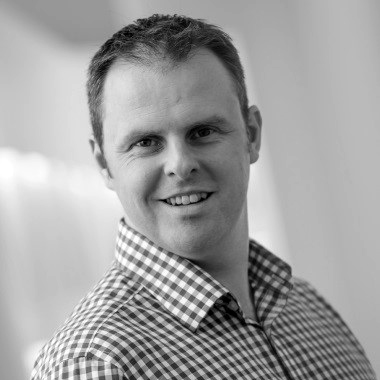Innovations in Hemodialysis
on LinkedIn:
In our recent blog post ‘What’s Next In Hemodialysis’ we looked at some of the trends that are driving the industry. This month we report from the European Renal Association – European Dialysis and Transplant Association (ERA-EDTA) congress in Budapest. With more than 110 companies exhibiting to 9,500 attendees, Matt Brady, Partner and Head of Medical Therapy, and Clare Beddoes, Senior Healthcare Innovation Consultant, highlight some of the latest innovations in renal care.
Home dialysis on the up?
This is the question we asked before the conference, and from what we saw the answer seems to be a resounding “yes.” And within the home hemodiaysis (HHD) space, we see a definite trend toward user interface enhancement.
We visited the stand of home haemodialysis (HHD) market leader NxStage, which we noted was nicely connected to its new owner Fresenius Medical Care’s booth by a smart, ‘on-brand’ blue carpet. Here we had the chance to open, load and look at all aspects of the NxStage machine that a patient would have to learn to interact with at home. Undoubtedly the world leader in HHD, the NxStage system has now been around for nearly 20 years. Whilst its user interface is clearly effective to date, we imagine NxStage will move to modernise this under its new owner, with a view to reclaiming UI leadership from less established players.
Quanta is a good example of a company launching a modernised user interface on an existing HHD setup, this update launched at ERA-EDTA last year and was again on display this year. The clean and stylish tablet-controlled Physidia machine impressed us, with a detachable tablet-style UI which allows patients to program and control their machine from the comfort of their armchair, as opposed to having to reach up to a screen, which can be difficult or uncomfortable during a dialysis session.
As well as those companies we know are dedicated to producing machines for patients to use at home, we heard interest in HHD from other players, perhaps currently better known for their expertise in in-center dialysis. Several told us they are considering, or are currently developing, machines dedicated to HHD. In our opinion, understanding the complexity of physician, patient and healthcare system drivers, needs and barriers for HHD will be key to successful new entries into this market.
Emerging competition from China – or Canada?
As we anticipated, we again saw many interesting companies from China, several of whom still hint at an interest in entering western markets – but there was no “big reveal” at this time. Instead, the big surprise entrant at the congress was a new company from Canada. NephroCan is a Vancouver-based company offering a range of dialysis products including membranes, blood lines, a chair and reverse osmosis machines – with the promise of an in-center dialysis machine by the end of the year. An impressive debut with a large booth – NephroCan is certainly one to watch.
Biofeedback is gaining traction
At one level biofeedback is well established in HD – for example through routine monitoring of venous blood pressure, flow and arguably clearance (Kt/V). This year we noted an uptick in interest in novel approaches to biological monitoring to help ensure successful dialysis and safeguard the patient.
The South Korean company InBody markets various formats of a non-invasive device which works using inductive measurements through the soles of the feet and the hands. This indicates not only how much fluid to remove from a dialysis patient (by determining their “dry weight”) but can also measure various nutritional status indicators, such as segmental muscle and fat mass, and evaluate segmental fluid imbalances to identify circulation issues. Although InBody’s biggest market focus currently is gyms (tracking athletes’ hydration status, lean muscle mass, etc) rather than dialysis clinics, the company has recently been accepted onto the NHS Supply Chain and has UK dialysis clinics in its sights.
Meantime, market leader Fresenius Medical Care was promoting active control of sodium levels as a software upgrade to their existing 6008 dialysis machine, and we heard of other firms who are exploring the use of sensors and algorithms to more tightly control fluid balance and blood pressure during dialysis. Here at Cambridge Design Partnership, we see this as a very positive trend, given that variations in blood pressure and volume are key drivers of congestive heart failure, one of the most significant comorbidities of End Stage Renal Disease (ESRD).
Bespoke patient care
The sheer number of companies offering dialysis products such as bloodlines and membranes was staggering. How does a company differentiate its products in such a crowded marketplace? One solution could be by promoting the use of bespoke prescriptions, according to an interesting presentation we listened to by a leading nephrologist, citing an eminent Japanese physician who holds a stock of 25 different membranes. This gives him greater flexibility to tailor prescriptions to the individual patient, taking into account comorbidities, nutritional status, stage of disease etc. and to monitor and change this over time. Many delegates that we spoke to agreed that bespoke prescribing of this nature should become more commonplace.
This is, indeed, an exciting time for the renal care industry. In such a crowded space it will be increasingly important for all players (large or small, new or established) to understand where the opportunities for innovation and improved patient care exist. CDP’s innovation research & human factors team, biomedical engineers, industrial designers, software & electronics team, and manufacturing engineers, all share a passion to develop products to improve patient lives. We have the experience and innovation skills to create new products in this life-saving sector, and we are ideally placed to continue to play our part in driving innovation in renal care.

